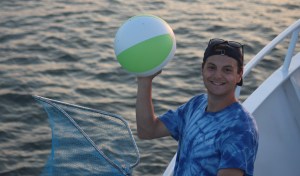Plastic! It’s Cheap. It’s Convenient. It’s Everywhere. and It’s Destroying Our Oceans.
According to the International Union for Conservation of Nature (2022), 400 million tons of plastic are produced each year, and of that 400 million tons, 14 million tons end up in our oceans. Now, you may think, “That’s not a big deal, the oceans are huge,” or, “It’s just plastic, how harmful can it be?” But, plastic is the main contributor to ocean pollution and its effects on marine life are detrimental.
Plastics are synthetic materials made primarily from polymers. Because of their chemical composition, they can be molded into anything and are extremely durable; it takes anywhere from 20 to 500 years for plastic to completely decompose. Plastic is found in everything too, from containers to our clothes, it has become so embedded in our lives that you may not even realize you’re using something made of plastic.
Plastics have found their way into our oceans, where they are in the process of destroying the complex, diverse ecosystem of the oceans. The most common impacts of plastics on marine life are ingestion, suffocation, and entanglement. Marine organisms often mistake plastic debris for a source of food. Over time the plastic builds up in their stomachs causing them to starve. Bigger plastic pieces become lodged in the throats of marine life and they die of suffocation as a result. Large marine organisms, such as sharks, turtles, cetaceans, and seabirds become entangled in discarded plastic fishing gear, resulting in difficulty moving and feeding. According to NOAA’s 2022 West Coast Whale Entanglement Summary, reports of entangled whales have been increasing since 2020.

Our mate collects a plastic beach ball in the Delaware Bay a part of our Clean Ocean Initiative to collect floating debris during our ecotours.
If you still do not think that plastic polluting our oceans is a big deal, then maybe this will change your mind; according to YourPlasticDiet.org, it is estimated that we eat an average of 5 grams, or one credit card worth of plastic each week. How is this possible you ask? When plastic breaks down, it turns into microscopic particles known as microplastics, which are plastics smaller than 5 millimeters. Fish will often mistake microplastics for food, and once consumed it is not digested. Instead, the pieces accumulate in the stomach and tissues of the fish, which once consumed by a person is essentially transferred into their body. Microplastics have been found to cause damage to cells, respiratory problems, and other health related issues. Still think the problem of plastic isn’t a problem?
It is predicted that by 2027, plastic production will increase by another 17 million tons (Reuters, 2023). What does that mean for the oceans? What does that mean for us? These are the questions that we should be asking before we let the problem of plastic pollution grow more out of hand than it already has.

-Hayley Keefe
Research Intern at Cape May Whale Watch and Research Center
Stockton University ’25
References:
Carrington , Damian. “Microplastics Found in Human Blood for First Time.” The Guardian, 24 March 2022, www.theguardian.com/
“Find out How Much Plastic You’re Eating.” Your Plastic Diet, 23 October 2019, yourplasticdiet.org/.
“Marine Plastic Pollution.” IUCN, 1 June 2023, www.iucn.org/resources/
“Single-Use Plastic Production Rose between 2019 and 2021 despite Pledges.” Reuters, 6 February 2023, www.reuters.com/
“2022 West Coast Whale Entanglement Summary .” NOAA Fisheries, March 2023, media.fisheries.noaa.
